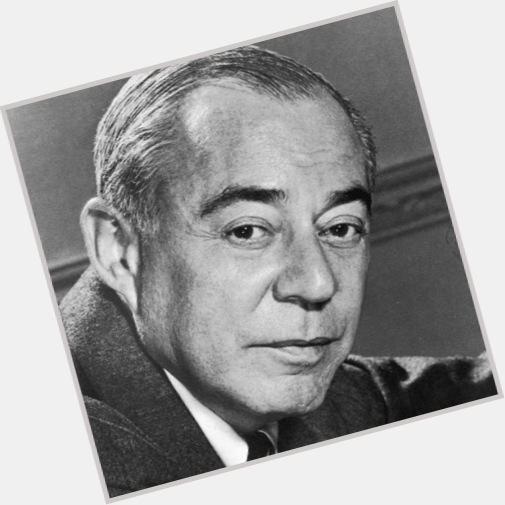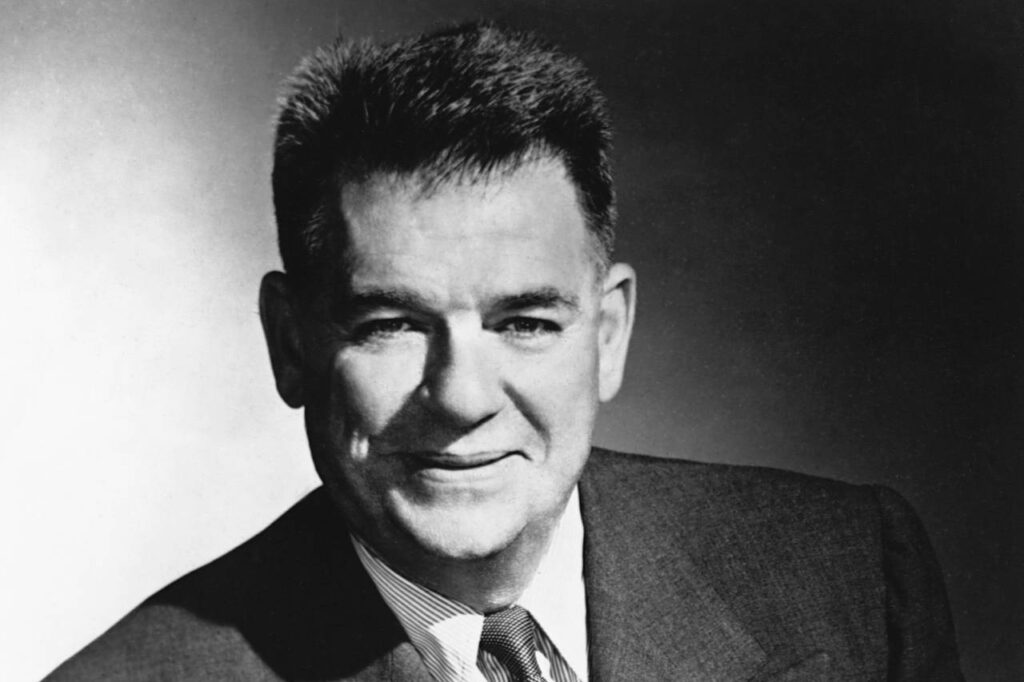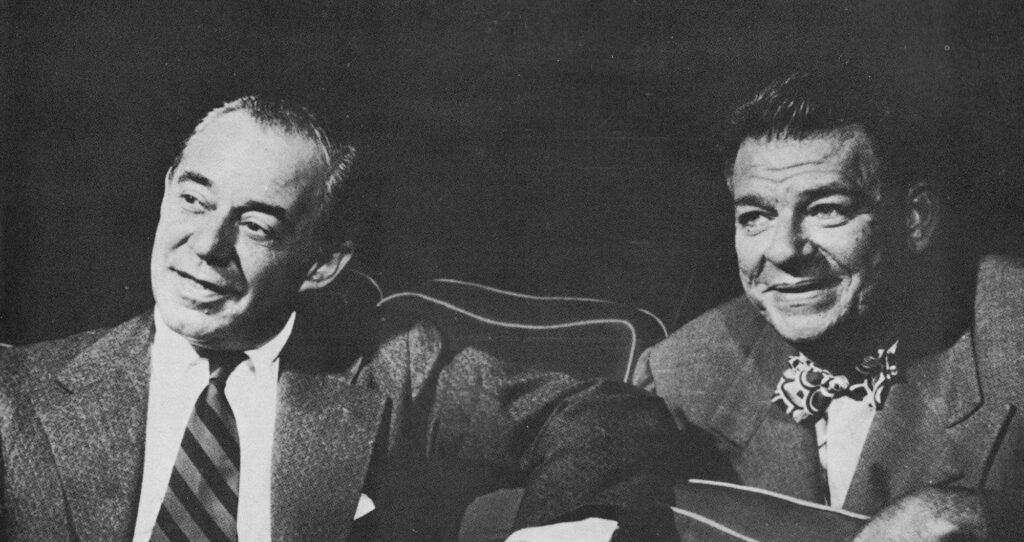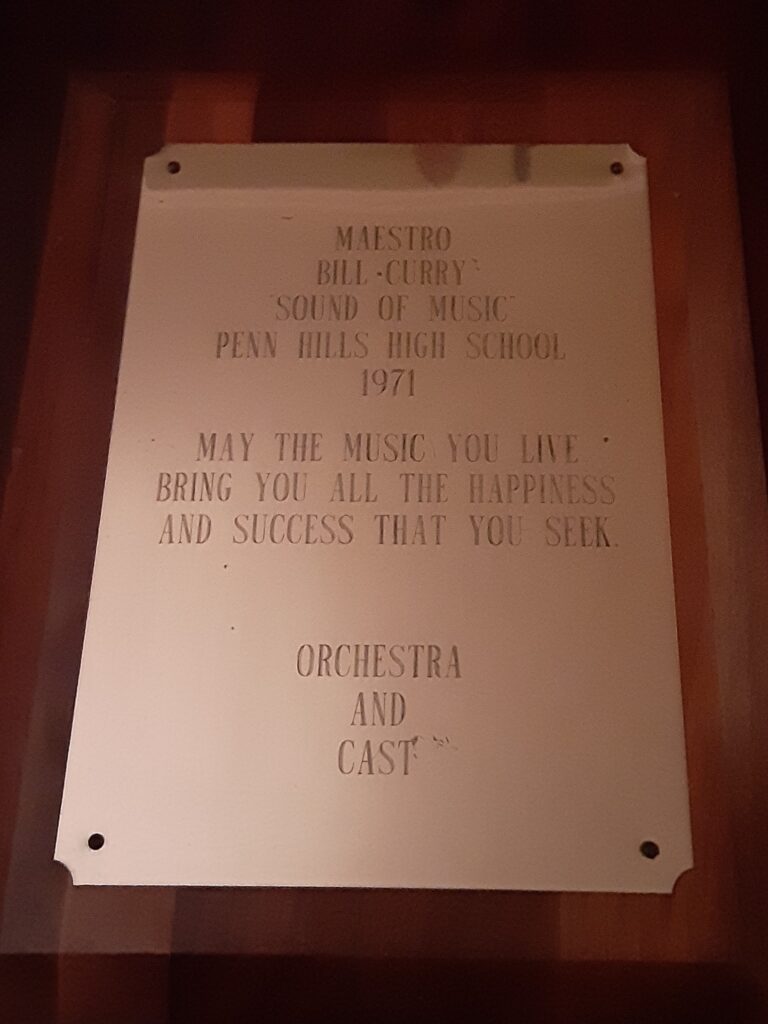Monday Musicale with the Maestro – December 21, 2020 – A Month of Holiday Music, Part 3: The Sound of Music and “Sleigh Ride”
A Month of Holiday Music, Part 3:
The Sound of Music and “Sleigh Ride”
Though the Rodgers and Hammerstein musical play The Sound of Music does not have a Christmas theme, for several decades now it has been televised during the holiday season, either in its 1965 film version or in the “live” production from 2015. One reason for this is that almost from the beginning, the song “My Favorite Things” has been associated with Christmas. Another is that it’s an endearing family show with several roles for children and a warm, home-for-the-holidays atmosphere. Since it’s also the pinnacle of the long and brilliant collaboration between composer Richard Rodgers and lyricist Oscar Hammerstein, it’s an especially fitting topic for our Monday Musicale today!
The world celebrated the centennial of Richard Rodgers in 2002, and in his honor, I conducted several popular all-Rodgers concerts with the North Carolina Symphony.

It was during this year that I fully recognized the musical brilliance, indeed the genius of Richard Rodgers. He had a fifty-year career as a composer for the theater, films, and television and was an inspired melodist who seemed to compose great songs as easily as an apple tree producing its fruit. The highlight of his career was his collaboration with the lyricist Oscar Hammerstein.

Before their collaboration began in 1943, they both had successful careers in the musical theater world. From 1919 to 1943, Rodgers worked with the lyricist Lorenz Hart (1895-1943). Together, they wrote a series of hit shows including their masterpiece, Pal Joey, and songs that are still regarded as pop-jazz standards, such as “My Funny Valentine”, “Where or When”, and “The Lady Is a Tramp.” Oscar Hammerstein had had an equally impressive career, which included writing the lyrics and libretto (book) for Jerome Kern’s Showboat, featuring perhaps the greatest of all Broadway songs, “Ol’ Man River.” But the highlight of both men’s artistic lives was their 17-year collaboration, which produced a series of artistic and commercial successes. These included Oklahoma (1943); Carousel (1945); South Pacific (1949)—with a Pulitzer Prize for Drama in 1950; “The King and I” (1951); and their final and most famous triumph, The Sound of Music (1959).

I’ve loved this work ever since 1971, when I was 16 (going on 17!) and conducted the Penn Hills High School production. Penn Hills is a suburb near Pittsburgh, and the local media made a big deal of the fact that I was the first high school student in the state who was asked to conduct an entire musical. After the final performance, the cast gave me this plaque that I will always treasure.

The inscription on this gift was prophetic: my life has been based on my love of great music, a love that is so fervent that, at my best, I don’t feel I am conducting the music. Rather I feel that I am LIVING it.
The Sound of Music is loosely based on experiences of the 20th– century Austrian vocal group called the Trapp Family Singers. The book-libretto is based on the memoirs of Maria von Trapp and was drafted by the writing team of Howard Lindsay and Russel Crouse (who also wrote Arsenic and Old Lace, State of the Union, and Life with Father). Despite the international fame The Sound of Music currently enjoys, its Broadway debut had a very rocky critical reception. Critics in New York City called it dated and sentimental—a throwback to the “bad old days” of European operetta, with its central European atmosphere. Walter Kerr’s review from the Herald Tribune was more sarcastic than most, describing it as “a cascade of sugar” and “almost too sweet for music.” Yet the general public has embraced the show from the very beginning and hasn’t let go of it since.
Several of the songs were almost immediately part of the Great American Songbook. In his autobiography Musical Stages, Rodgers describes the function of some of these classic songs in The Sound of Music. The title song
was an arm-flinging tribute to nature and music. “Do-Re-Mi” offered an elementary music lesson that Maria employed to ingratiate herself with the von Trapp children. “My Favorite Things” is a catalogue of simple pleasures which had a folkish quality, while “The Lonely Goatherd and the instrumental “Laendler” evoked the atmosphere of the Austrian Alps. “Climb Ev’ry Mountain” was needed to give strength both to Maria when she left the abbey and to the whole family at the end, when they are about to cross the Alps. (300-301)
The Laendler referred to here is a slow Austrian waltz, in this case based on motifs from his song “The Lonely Goatherd.” In both the play and the movie, the Laendler is danced by Maria and Captain von Trapp, and it is then that they realize they are in love with each other.
“Laendler” from The Sound of Music (50th Anniversary Edition) ℗
Conductor, Irwin Kostal
Composer: Richard Rodgers | Lyricist: Oscar Hammerstein II
Producer: Nick Redman
Originally released 1965.
All rights reserved by Rodgers and Hammerstein:
An Imagem Company Released on: 2015-03-06
Provided to YouTube by Sony Music Entertainment Laendler
Rodgers and Hammerstein were appalled by the critical snarls they faced, but a more pressing concern was Hammerstein’s health, which had been failing in recent years and led to a hospital visit for chronic stomach pains amidst the production. Oscar was not told, but his family learned that Oscar was suffering from stomach cancer and had only six months to live. Despite being in pain, he finished the show with some of his most endearing and tuneful creations. The last lyric he wrote was for the nostalgic song “Edelweiss,” which seems so like an authentic folk song that many Austrians have claimed they were singing it even before it was written!
Hammerstein’s next-to-last lyric, written for the reprise of “Sixteen Going on Seventeen” is my personal favorite:
A bell is no bell till you ring it,
A song is no song till you sing it.
And love in your heart
Wasn’t put there to stay. . .
Love isn’t love
Till you give it away.
Oscar Hammerstein passed away less than a year after the premiere of his greatest success. The young Stephen Sondheim was mentored by Hammerstein from Sondheim’s teenage years through his first Broadway shows, including lyric writing assignments for West Side Story and Gypsy. Sondheim has memorably said of his empathetic and gracious mentor, “Oscar had unlimited soul.”
It is tragic that Hammerstein didn’t live long enough to see the unprecedented success of The Sound of Music in its film version, which at the time was the number one commercial success in film history—outdoing even Gone with the Wind.
Most of us probably know this movie version, but there are a few differences between the film and the stage versions. Certain songs from the original production were not included in the movie and two new songs were added. Since the movie was made after Hammerstein’s death, Rodgers decided to act as his own lyricist. “I Have Confidence in Me” features Rodgers’ sensational lyric, written in his late partner’s trademark optimistic style and a melody showing that Rodgers (even at age 63) was far from written-out.
In this scene from the 1965 film, we see Maria (Julie Andrews), a high-spirited young woman who is studying to be a nun. She has just accepted a daunting new challenge. She is being sent to the villa of retired Naval officer Georg von Trapp, a widower who needs a governess to help discipline his seven children. She is understandably nervous.
I Have Confidence scene (with lyrics, if you want to sing along!) from The Sound of Music (1965)
Julie Andrews; Richard Rodgers; Oscar Hammerstein II
Here is a version in better sound
I Have Confidence scene from The Sound of Music (1965)
Julie Andrews; Richard Rodgers; Oscar Hammerstein II
Licensed to YouTube by:
UMG; LatinAutorPerf, ASCAP, UMPI, UNIAO BRASILEIRA DE EDITORAS DE MUSICA – UBEM, LatinAutor – PeerMusic, Concord Music Publishing, and 13 Music Rights Societies
In the 1990s, there was a tradition of doing a “Sound of Music” sing-along in one of the larger movie theaters in London. And like “Rocky Horror Picture Show”, people were invited to dress up like the characters for the showings of this film.
So, there were girls in “pink satin dresses” and some people wore lederhosen or “warm woolen mittens”, etc. One man showed up in a full-body yellow jump suit, which seemed to be unrelated to the film. Someone finally asked him what character he was supposed to be portraying and he answered:
“I’m Ray! A drop of golden sun!”
The other new song for the movie version was “Something Good.” This is the only love duet Captain von Trapp and Maria sing in the entire show. But the addition of this new duet meant that the one in the original play had to go. And since millions of people know “Something Good” from the wildly popular movie version, stage productions in the last 20 years have always included it while deleting the song it replaced: “An Ordinary Couple.” I consider the deletion unfortunate, for to me this is one of Rodgers and Hammerstein’s most beautiful treasures and should not be lost to history.
In this video, the photos at the beginning and the end are of the real-life Maria and Georg von Trapp. The remainder are photos from the 1959 original Broadway production.
Here is a recording of it from the original Broadway cast with Mary Martin and Theodor Bikel.
An Ordinary Couple (From “The Sound of Music”)
Mary Martin, Theodore Bikel
Licensed to YouTube by:
UMG (on behalf of Roslin Records); LatinAutor – PeerMusic, UNIAO BRASILEIRA DE EDITORAS DE MUSICA – UBEM, Concord Music Publishing, LatinAutorPerf, and 6 Music Rights Societies
At our Holiday Pops concert on December 4, 2015 in the Durham Armory, the DSO performed a medley from The Sound of Music arranged by the original orchestrator for the musical, Robert Russell Bennet. Our guest conductor for this work was 20-year-old Jackson Cooper, who has conducted the Durham Symphony Orchestra on two occasions and served as Music Director/Conductor for the Durham Savoyards for two seasons. He has also served in a variety of roles within North Carolina arts organizations, including positions with the North Carolina Museum of Art, North Carolina Theatre, and the Justice Theatre Project. He is currently the Major Gifts Officer for Pacific Northwest Ballet and a candidate for an MFA in the Arts Leadership Program at Seattle University.

Jackson is now 25, and I have mentored him since I first saw him conduct a youth symphony eight years ago. At that time, I knew only about his conducting ambitions. But over the years, I have seen him branch out as an author, actor, playwright, arts critic, and stage director, and he has fulfilled all these assignments with remarkable ease and success. The DSO greatly enjoyed working with him because of his musicianship and his enthusiastic and positive personality. We hope you will also enjoy this performance!
Selections from “The Sound of Music”
Richard Rodgers arr. R.R. Bennet
Durham Symphony Orchestra
Jackson Cooper, Guest Conductor
Our encore for this Holiday Pops program was Leroy Anderson’s evergreen “Sleigh Ride”—which is THE holiday concert encore. Anderson, one of my favorite American composers, was the master of the three-minute musical miniature.

Though less of his music is played today, he wrote a least a dozen pieces that achieved enormous popularity, especially impressive considering these are all orchestral works. His hits include “Blue Tango, “Belle of the Ball,” and “Bugler’s Holiday.” The best of his works are magnificent but have been underrated by certain classical music fans, who complain that these musical morsels do not have the serious substance of (for example) Beethoven’s 5th Symphony. To this, I reply that THEY ARE NOT SUPPOSED TO! There is much to be said for a musical masterpiece in miniature—even if it is “only” an example of “light classical music.” I have never been a snob about such things, and as Duke Ellington supposedly said, “If it sounds good, it IS good!”
The main reason why I began composing again at age 35, after an 18-year hiatus, was that I had recently heard one of Anderson’s lesser-known, but lovely, pieces. I had the realization then that melodic beauty and accessibility were a virtue, not a sign of cop-out commercialism. It struck me that striving to be a musical populist—not one who appeals only to classical music fans—would be an honorable thing. And since then, every piece I have composed, had that goal in mind.
Virtually every performing amateur or professional musician has a long association with Leroy Anderson’s “Sleigh Ride.” You start performing it in 7th-grade band or orchestra, after which, you seem to play it every holiday season until your last year as a performer. In fact, it was the very first piece I ever conducted at age 15 and the last piece I conducted before the Pandemic of 2020! I’ve conducted it with 8 other American orchestras—and remarkably, in 2007, I was the first person EVER to conduct “Sleigh Ride” with the Los Angeles Philharmonic! I’m sure I have performed it well over a hundred times, but I can honestly say: not only have I never tired of it, I have always enjoy conducting it—as much as if I had written it myself!
We hope you will also enjoy the DSO’s performance! The Durham Armory is far from being a “pitch-perfect” concert hall, let alone a professional recording studio, but when I heard this performance for the first time in 5 years, I knew I wanted to share it with you. The concert included the Hillandale Children’s Chorus, and you can hear them clapping in time to the music while obviously enjoying themselves as much as the adults. And then, coming down the aisle from the rear of the hall we had a surprise guest appearance from Santa Claus himself! (Or someone wearing a Santa outfit. I just know it wasn’t ME.)

The squeals of delight from both the kids and the adults over Kris Kringle’s star turn and this Anderson classic created an unforgettable atmosphere of love and togetherness. And this is what I miss MOST about performing: the sharing of memorable moments with others. You cannot duplicate that same feeling at home with a few friends and your world-class sound system. There is something about the reciprocal giving between the audience and the performers that is a very real act of love. And did I already say that I miss this experience? Yes. And so do you and our DSO musicians.
Let us hope that in the New Year, when we return to live performing, we will all feel we’re enjoying the greatest family reunion of our lives!
Sleigh Ride – Leroy Anderson
Durham Symphony Orchestra
William Henry Curry, Conductor and Artistic Director
Holiday Pops
Durham Armory, Durham, NC 11/29/2018

William Henry Curry
Music Director
Durham Symphony Orchestra
Recording Engineer: Max Wang
Comprehensive Editor (Text): Suzanne Bolt
Copy Editors: Marianne Ward and Tina Biello
Digital Layout and Publication: Tina Biello and Marianne Ward
Celebrating Maestro Curry’s 50 years conducting
& 11 years with the Durham Symphony!

Ready to take advantage of the available tax credits for end of year donations?
Please consider the Durham Symphony Orchestra
Funding is provided (in part) by the Durham Arts Council’s Annual Arts Fund, the N.C. Arts Council (a division of the Department of Natural and Cultural Resources), and a grant from the Triangle Community Foundation.
m


